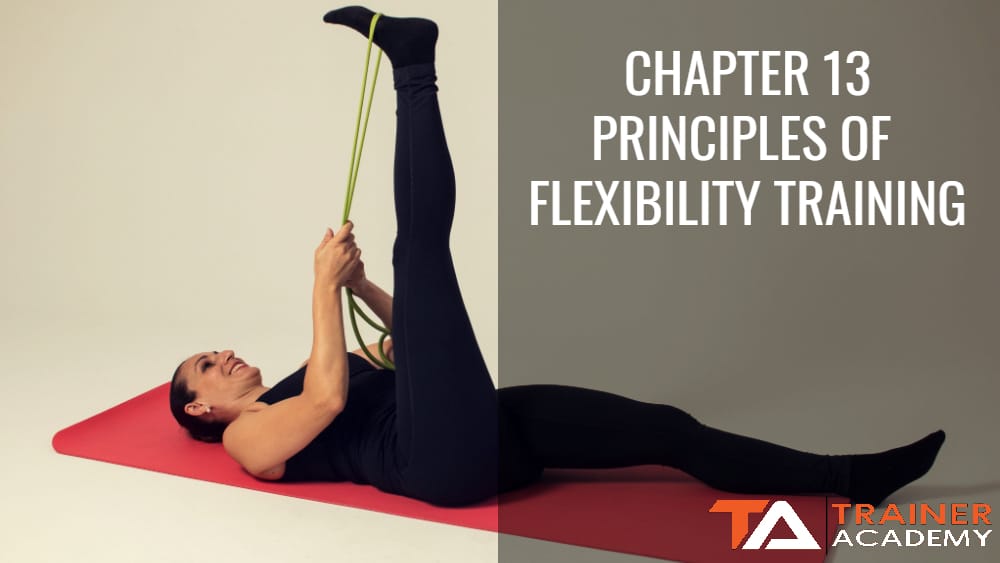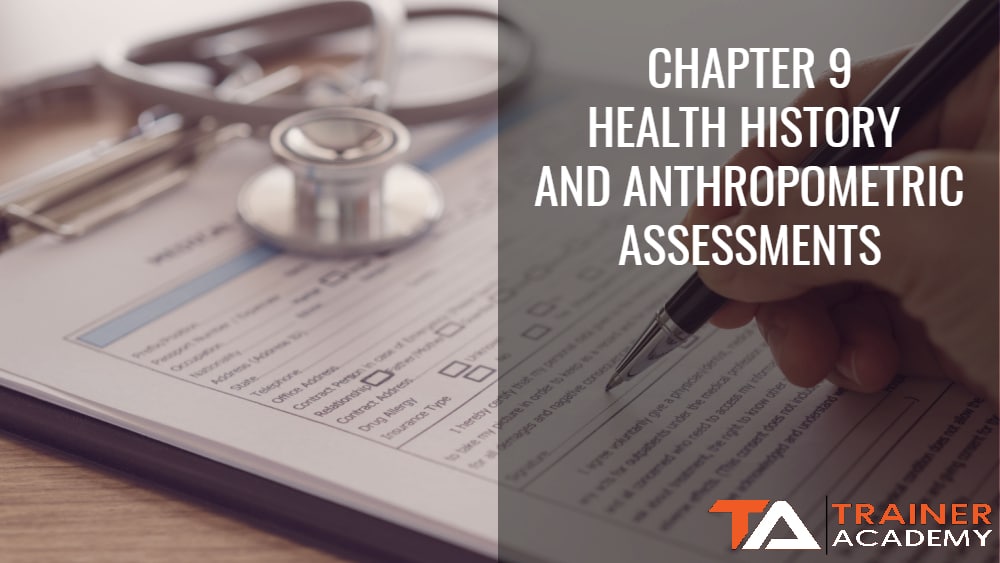Flexibility training is a key component of comprehensive fitness training. Flexibility training techniques encompass a very broad range of activities that are best utilized in a specific, progressive fashion.
Introduction to Flexibility Training
Flexibility can be defined as the ability of a joint to move through its complete ranges of motion without injury.1,12 This ability is dependent on the optimal function of the musculature surrounding a joint, including the ability to both flex and extend without impediment.2
For otherwise healthy individuals, greater flexibility tends to reduce the rate of injuries incurred in training and day-to-day life.
Ideal flexibility allows muscle tissue to contract, relax, and synergistically work with all muscles supporting a moving joint or series of moving joints.1,2
The two major concepts of flexibility are elasticity and plasticity.
Elasticity is the ability of the muscle-tendon complex to return to its original state following a movement pattern.3 Through both lengthening through a stretch phase and contracting under resistance, fluidity of elastic potential has been shown to reduce potential muscle injury.4 Plasticity refers to how skeletal muscle adapts to the load and stress placed upon it.5 Muscle tissue will grow in response to healthy stimuli or deteriorate if it is not utilized.6
Factors Affecting Flexibility
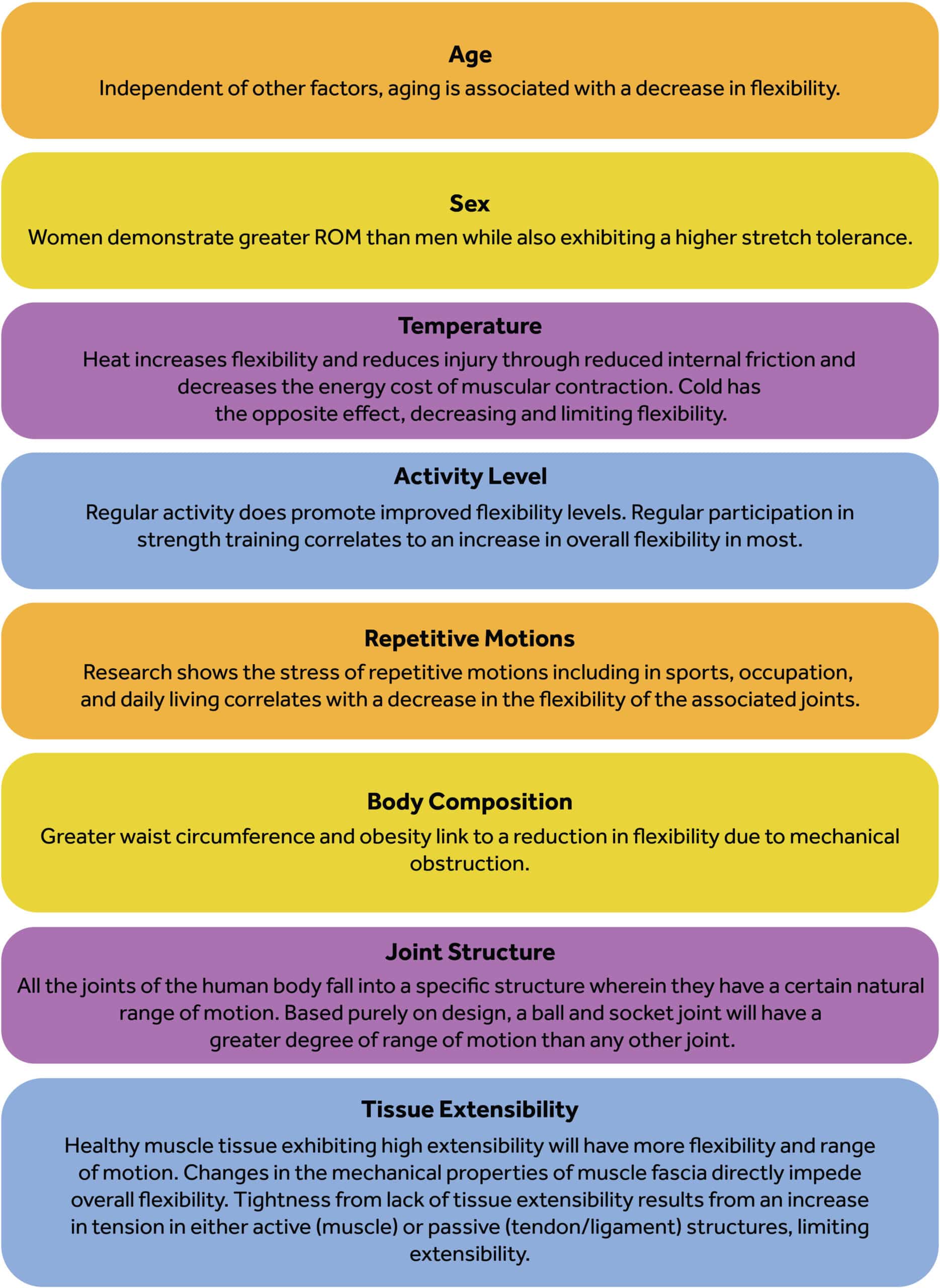
Multiple factors have been shown to limit flexibility and someone’s ability to improve their own safe range of motion. The factors most likely to affect overall flexibility include gender, age, temperature, activity levels of the individual, repetitive motions (pattern overload), body composition, prior Injury, joint structure, and tissue extensibility.7
- Sex: Women demonstrate greater ROM than men while also exhibiting a higher stretch tolerance, according to research.8, 16
- Age: Regardless of gender, aging has been correlated to a decrease in flexibility.9, 11
- Temperature: Heat increases flexibility and reduces injury through reduced internal friction and decreases the energy cost of muscular contraction. Cold proves the opposite, decreasing and limiting flexibility.10
- Activity Level: Regular activity does promote improved flexibility levels.11 Regular participation in strength training correlates to an increase in overall flexibility in most.
- Repetitive Motions: Research shows the stress of repetitive motions often used by athletes but not limited to them, correlates with a decrease in flexibility of the associated joints.13
- Body Composition: Greater waist circumference and obesity directly link to a reduction in flexibility due to mechanical obstruction.9, 14
- Prior Injury: Limitations in flexibility due to injury have been well documented over time. Reasoning includes joint disfiguration, scar tissue development, and muscular maladaptation.13, 15
- Joint Structure: All the joints of the human body fall into a specific structure wherein they have a certain natural range of motion.17 Based purely on design, a ball and socket joint will have a greater degree of range of motion than any other joint.15, 17
- Tissue Extensibility: Healthy muscle tissue exhibiting high extensibility and flexibility allows for greater flexibility.15, 18 Changes in the mechanical properties of muscle fascia including thickness and tightness directly impede overall flexibility. Tightness results from an increase in tension in either active (muscle) or passive (tendon/ligament) structures, limiting extensibility.18,19
Benefits of Flexibility Training
A flexibility training program has the goal of lengthening the distance between a muscle’s origin and its insertion.19
Generally, muscle tension is inversely related to muscle length. This means that the longer the muscle, the less tension it should hold.
The success of a flexibility training program is typically determined by measurable increases in the range of motion as the program progresses.19
Increased range of motion offers many performance advantages in sports and other physical activities. Some sports have inherently high flexibility requirements, while other sports do not require as much flexibility.
Nevertheless, athletes across many sports with a less-than-normal range of motion typically benefit from improved flexibility.
Another benefit of improved flexibility is injury reduction. One particular study around workplace injuries had subjects perform a variety of stretching exercises. During the course of the study, subjects reported reduced discomfort and demonstrated an increased range of motion, thereby decreasing the likelihood of injury.20
Additional research suggests that both acute and chronic stretching is associated with decreased injury frequency.33
In addition to muscle lengthening, an additional benefit of stretching lies in the alignment of collagen fibers within the muscle tissue.
Specifically, in cases of rehabilitation and healing tissue, proper stretching has been shown to improve recovery.19 Pain relief is another useful application for a stretching program. In certain cases, studies indicate that stretching has been performed as well as strength training and yoga for the relief of chronic musculoskeletal pain.19, 21
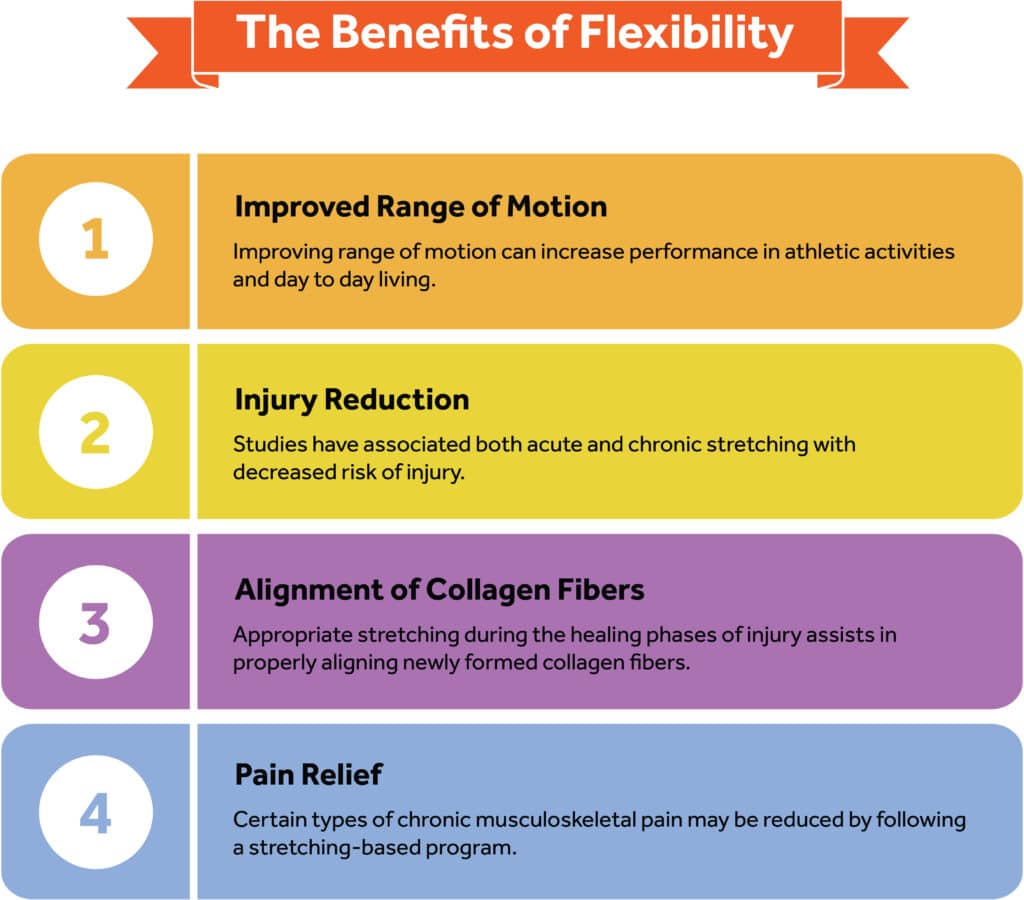
Types of Stretching
Static Stretching
Static stretching involves extending the targeted joint to the point of discomfort at the end range of flexibility, then holding the end position for 30 seconds or more for one or more sets.24
The cumulative effect relaxes the stiffness in the targeted muscle and muscle-tendon unit.25 Research shows that muscle-tendon unit stiffness is commonly linked to soft tissue injury.22, 23
By utilizing a slow and controlled lengthening of soft tissue, static stretching improves flexibility in a range of motion tests, passive torque, and passive stiffness.23, 28
Dynamic Stretching
Dynamic stretching involves loosening muscle tissue through a series of whole-body active range of motion exercises. The rhythmic movements of the muscles elevate body temperature, enhance motor-unit excitation, improve kinesthetic awareness, and improve active range of motion. Typical exercises used during a dynamic stretch include leg swings, skipping, and jumping.26 The effects from dynamic stretching have been determined to be limited and only effective in the acute phase when measuring stiffness and range of motion.26, 27
Ballistic Stretching
Ballistic stretching utilizes the body’s momentum through repetitive bouncing movements at or near the end range of motion. Immediately post ballistic stretch, an increase in range of motion has been noted, but the findings are controversial. No long-term benefit around ballistic stretching has been found.28, 29
Of all the varieties of stretching, ballistic stretching has been shown to be potentially harmful as a byproduct of the muscle tissue contracting when the muscle spindle is stimulated in response to rapid stretching in the muscle.28
Proprioceptive Neuromuscular Facilitation (PNF)
Stretchers perform PNF via a series of contractions by the shortened muscle group followed by a combination of full relaxation, followed antagonistic contraction, which facilitates muscular inhibition by activating the Golgi tendon organs of the muscle tendon unit.30
PNF stretching performs similarly to static stretching and thus should be used in a similar fashion. Both will show an immediate range of motion increase if done correctly. They can both temporarily reduce muscle strength, power, speed, and agility, especially if performed directly before these other modalities.31, 32
Recommendations for Flexibility Training
A stretching routine aims to increase the range of motion of the body by systematically targeting muscle tightness. The tightness can occur in two different scenarios.
Tight Muscles
Muscles may be tight because they are overly dominant or active.
The activation of the muscle at its resting length keeps the muscle in a shortened or contracted position. In this case, the goal of the stretching program is to lengthen the shortened muscle, thus gaining elasticity and increased potential for both extension and flexion.
Muscle Weakness and Imbalance
Muscle tightness can also occur when a muscle is too weak compared to its dominant counterpart. In this situation, the muscle is chronically lengthened as it is not strong enough to counteract the resting tension of the opposing muscle group.
In this scenario, activating and strengthening the weakened muscle can be beneficial, and can improve the range of motion independent of passively stretching the dominant muscle.
Most often, these two causes of flexibility limitations occur together. As such, the most effective stretching programs cover multiple areas of the body utilizing a range of stretching types.
Static stretches should be held for a long period of time typically 30 seconds or longer. Static stretching is a good stretching technique for developing length along the muscle-tendon unit. As mentioned, their effects can be deleterious to strength and power before exercise, so these stretches should be placed after those exercise modalities in a training session.
Dynamic stretching is best utilized as a warm-up activity accounting for the number of benefits the active range of motion exercises create. In the case of overly lengthened muscle tightness, dynamic stretching proves effective in properly warming up both sides of a force couple, creating elasticity around vulnerable joints. Dynamic stretching acutely affects tightness and is not considered the best way to create long term benefits, but is excellent for acute training benefits.
Ballistic stretching’s benefits are controversial at best and can’t be recommended above the other varieties of stretching in any fashion.
The utilization of proprioceptive neuromuscular facilitation should be used parallel to static stretching with more pronounced benefit in immediate range of motion increases.
For tightness created by a dominant muscle group, PNF can create an immediate range of motion improvement. If used prior to activity ideally it is paired with a dynamic warm up immediately following the stretching routine.
Warm Up Protocols
General Warm Up
To plan the warm up, trainers should look at the muscles, joints, and systems required within this exercise session to pick a combination of dynamic stretches along with light movements that prepare the body for the entire workout.
The general warm up also reveals any particular tightnesses the athlete is currently experiencing which may require special attention on the day of training.
Example General Warm Up for Sprinting session

Specific Warm Up
Now that the client is warmed up and mobilized for the workout, they need to perform a specific warm up using the first main movement in the session with lower resistance or intensity. This specific warm up protocol should occur before the ‘working sets’ in most typical resistance training programs.
Performing heavy or high intensity resistance exercises requires a greater number of warm up sets. For example, a bench presser aiming to do a 5 repetition maximum (RM) with 495lbs is going to need more warm up sets than a novice aiming for a 5RM with 95lbs.
Example Specific Warm Up Before a 100m Sprinting Session
The client completes 3-5 warm up 100 meter sprints with increasing intensity prior to the target intensity sprints of the same distance.
Techniques for Select Flexibility Exercises
Static Stretches
Neck Rotation (Look Right and Left)
Target muscles:
- Levator scapulae
- Suboccipitals
Procedure:
- With an upright torso and eyes fixed parallel to the floor, slowly rotate the head looking to the right as far as comfortable and hold at the end range of motion for 15-30 seconds.
- After completing the stretch hold, return to the center then repeat to the left side.
- Repeat the stretch 3 times per side.
Neck Flexion
Targeted muscles:
- Splenius capitis
- Cervicis
Procedure:
- Start with an upright torso.
- Slowly bring the chin towards the chest trying to tuck the chin to the sternum creating a stretch on the back of the neck.
- Hold for 30 seconds then relax.
- Repeat 3-5 times.
Neck Extension
Targeted muscles:
- Deep neck flexors
- Scalenes
- Sternocleidomastoids
Procedure:
- Start with an upright torso.
- Contract the scapulae together while trying to slide them down the back.
- Bring the back of the head towards the back and spine stretching the front of the throat.
- Hold for 30 seconds then relax.
- Repeat 3-5 times.
Lateral Neck Flexion
Targeted muscles:
- Levator scapulae
- Trapezius
- Sternocleidomastoids
- Scalenes
Procedure:
- Start with an upright torso, head pointed forward.
- Take the right hand and gently rest it on top of the left ear with the elbow tilted upwards.
- Let the weight of that hand slowly pull the right ear towards the right shoulder, stretching out the muscles running along the side of the neck and shoulder complex.
- Hold for 30 seconds and then switch sides.
- Repeat 3-5 times.
Hands Behind Back
Targeted muscles:
- Biceps
- Anterior deltoid
- Pectoralis major/minor
Procedure:
- Start standing with fingers interlocked behind the back and arms straight.
- Slowly lift the arms as high as possible without letting the torso lean forward.
- Hold for 30 seconds then relax.
- Repeat 3-5 times.
Pretzel
Targeted muscles:
- Gluteus maximus
- Gluteus medius
- Gluteus minimus
- Obliques
- Paraspinals
Procedure:
- Start seated on the floor with the legs extended straight out in front.
- Cross right foot over left leg, planting the right foot outside of the left knee.
- Cross the left arm over the right thigh while placing the right arm on the floor behind the body.
- Rotate the trunk and look over the right shoulder.
- Hold for 30 seconds then relax.
- Switch sides with every repetition.
- Repeat 3-5 times per side.
Supine Hamstring Stretch
Target muscles:
- Biceps femoris
- Semimembranosus
- Semitendinosus
Procedure:
Start lying on the floor adjacent to a doorway or wall.
Lift one leg to rest on the doorway or wall while keeping the opposite foot planted on the floor.
Extend the elevated leg while pulling the toes towards the body to create the maximally tolerable hamstring stretch.
Forward Lunge
Target muscles:
- Hip flexors
- Rectus abdominis
Procedure:
- Start in a half kneeling position with shoulders stacked vertically over the knee on the floor.
- Opposite foot should be in a forward lunge position with 90-degree knee bend.
- Squeeze glutes of the kneeling leg to drive the kneeling hip forward into extension while keeping shoulder stacked over knee.
- Hold for 30 seconds then relax.
- Repeat 3-5 times.
Prone Quadriceps Stretch
Target muscles:
- Rectus femoris
- Vastus lateralis
- Vastus intermedius
- Vastus medialis muscles
Procedure:
- Lie on a mat or the floor, chest facing the ground, legs straight.
- Bend the knee and grab the ankle with the corresponding hand.
- Pull the ankle towards the glutes.
- Hold for 30 seconds, then switch sides.
- Repeat 3-5 times.
Lying Knee to Chest
Target muscles:
- Erector spinae
- Latissimus dorsi
- Gluteus maximus
- Gluteus medius
- Gluteus minimus
- Thoracolumbar fascia
Procedure:
- Start lying on the back with legs extended and heels on the floor.
- This stretch can be performed with either one or both legs based on user preference.
- Pull knee(s) towards chest wrapping arms around tucked knee(s) and hugging leg(s) towards the chest.
- Hold for 30 seconds then relax.
- Repeat 3-5 times.
Semistraddle (Modified Hurdler’s Stretch)
Target muscles:
- Biceps femoris
- Semimembranosus
- Semitendinosus
Procedure:
- Start seated on the floor with one leg extended out in front.
- Bend the opposite knee so that the bottom of the foot rests on the inside of the thigh of the extended leg.
- While trying to keep the back straight, reach for the toes of the extended leg with both hands allowing the torso to fold over the extended leg.
- Hold for 30 seconds then relax.
- Repeat 3-5 times per side.
Butterfly
Target muscles:
- Adductors brevis
- Adductor longus
- Adductor magnus
- Gracilis
Procedure:
- Start seated on the floor with both legs out in front.
- Bend both knees to bring the bottoms of both feet together.
- The closer the heels pull toward the groin, the more intense the stretch will be.
- Hold both feet with both hands and allow both elbows to rest on both knees.
- Keeping the torso upright, allow both knees to fall towards the floor. Additional pressure can be applied through the elbows.
- Hold for 30 seconds then relax.
- Repeat 3-5 times.
Wall Stretch
Targeted muscles:
- Biceps femoris
- Semimembranosus
- Semitendinosus
- Gastrocnemius
- Soleus
- Additionally, the static wall stretch will utilize gravity to promote thoracic extension through the upper back via natural compression.
Procedure:
- Start by lying on the floor with the body perpendicular to a wall.
- Place both legs vertically on the wall and bring the tailbone as close to the base of the wall as possible.
- Engage quads and maintain straight legs to deepen the effect of the stretch.
- Hold for 1 to 4 minutes.
Forearm Stretch (Flexor and Extensor)
Targeted muscles:
- Carpi ulnaris
- Palmaris longus
- Carpi radialis
- Pronator teres
- Brachioradialis
- Extensor digitorum
- Extensor digiti minimi
- Anconeus
Procedure:
- Come down onto all fours with hands directly under the shoulders and knees directly under the hips.
- Spread the fingers as far out as possible with the index finger pointing forward.
- Gently rock the hips forward until the stretcher feels a stretch along their flexor muscles. Hold for 15-20 seconds.
- Move the hips backward until they feel a stretch in the other direction along their extensors.
- Come back to center and slowly rotate the fingers outward until the thumb is pointing forward. Repeat the same stretch.
- Keep rotating the wrists until the fingers are pointed back towards the hips and repeat the stretch, being mindful of the stretcher’s own mobility restrictions.
Dynamic Stretches
Arm Circles
Targeted muscles:
- Rotator cuff
- Anterior deltoid
- Medial deltoid
- Posterior deltoid
- Biceps
Procedures:
- Start in a standing position with arms straight and feet shoulder-width apart.
- Raise the arms to the side bringing them up to shoulder height.
- Move the arms forward in a controlled circular motion.
- Repeat 20 times then reverse the direction of the circles.
Arm Swings
Targeted muscles:
- Pectoralis major
- Pectoralis minor
- Rhomboids
- Upper trapezius
- Middle trapezius
Procedure:
- Start in a standing position with arms straight and feet shoulder-width apart.
- Raise the arms to the side bringing them up to shoulder height.
- Bring the arms forward to wrap around the upper torso as if hugging the chest.
- Release the arms back towards the start position in a swinging motion.
- Maximize the range of motion comfortably in both directions.
- Repeat 15 times.
Leg Swings
Targeted muscles:
- Psoas
- Iliacus
- Rectus abdominis
- Rectus femoris
- Vastus medialis
- Vastus lateralis
- Vastus intermedius
- Gluteus maximus
- Gluteus medius
- Gluteus minimus
Procedure:
- Start in a standing position with feet shoulder-width apart.
- Swing one leg forward up to hip height. The leg should be straight and the toe pointed forward.
- Swing the leg backward, bring it behind the body to hip height using gravity’s momentum.
- Repeat 15 times and switch sides.
Lunge Walk
Target muscles:
- Psoas
- Iliacus
- Rectus abdominis
- Rectus femoris
- Vastus medialis
- Vastus lateralis
- Vastus intermedius
- Gluteus maximus
- Gluteus medius
- Gluteus minimus
Procedure:
- Start in a standing position with feet shoulder-width apart.
- Take one step forward allowing both knees to bend.
- Forward knee should stay on top of the forward ankle.
- Back knee should bend to 90 degrees and be directly under the torso.
- Maximize range of motion throughout the lunge.
- Step forward to return to the standing position then repeat on the opposite leg.
- Continue for 20 lunges.
Reverse Lunge Walk
Target muscles:
- Psoas
- Iliacus
- Rectus abdominis
- Rectus femoris
- Vastus medialis
- Vastus lateralis
- Vastus intermedius
- Gluteus maximus
- Gluteus medius
- Gluteus minimus
Procedure:
- Start in a standing position with feet shoulder-width apart.
- Take one step backward allowing both knees to bend.
- Forward knee should stay on top of the forward ankle.
- Back knee should bend to 90 degrees and be directly under the torso.
- Maximize range of motion throughout the lunge.
- Extend the forward leg to push back into the standing position then repeat on the opposite leg.
- Perform 20 alternating repetitions.
Hockey Lunge Walk
Target muscles:
- Psoas
- Iliacus
- Rectus abdominis
- Rectus femoris
- Vastus medialis
- Vastus lateralis
- Vastus intermedius
- Gluteus maximus
- Gluteus medius
- Gluteus minimus
Procedure:
- Start in a standing position with feet shoulder-width apart.
- Keeping one foot planted, rotate and step into a lunge at approximately a 45-degree angle. Allow planted foot to pivot on toes.
- Moving leg should bend to 90-degrees with knee above toes.
- Back leg will bend but doesn’t touch the floor.
- Extend moving leg to return to standing position.
- Repeat on the opposite leg.
- Perform 20 alternating repetitions.
Walking Side Lunge
Target muscles:
- Psoas
- Iliacus
- Rectus abdominis
- Rectus femoris
- Vastus medialis
- Vastus lateralis
- Vastus intermedius
- Gluteus maximus
- Gluteus medius
- Gluteus minimus
- Adductors brevis
- Adductor longus
- Adductor magnus
- Gracilis
Procedure:
- Start in a standing position with feet shoulder-width apart.
- Take one step laterally into a lunge.
- Moving knee will bend and torso can lean forward.
- Sit as low as possible onto the moving leg. Moving foot should point straight ahead and the knee should point the same direction as the second toe. Hip should be stacked above the ankle.
- Trailing leg should remain straight.
- Extend the moving leg to push the body straight up into a standing position. Bring the trailing leg to meet the moving leg without pushing off the trailing leg.
- Repeat for 10 lunges then switch to the opposite leg
Walking Knee Tuck
Target muscles:
- Gluteus maximus
- Gluteus medius
- Gluteus minimus
- Biceps femoris
- Semimembranosus
- Semitendinosus
- Gastrocnemius
- Soleus
Procedure:
- Start in a standing position with feet shoulder-width apart.
- Take one step forward in a normal walk pattern.
- Reach down and grab the trailing knee.
- Pull the trailing knee to the chest while simultaneously fully extending on the planted leg. Planted hip and knee should be extended with maximal plantar flexion.
- Release the knee and swing the leg through into the next step.
- Repeat for 20 tucks.
Walking Knee Over Hurdle
- Set up 2 to 6 hurdles at an equal height that is just below hip height.
- Stand in front of the first hurdle, throughout the exercise focus should remain on keeping the torso upright as well as the hips square and facing forward.
- The lead leg will drive the knee up and towards the chest then plant on the opposite side of the hurdle.
- The trailing leg will then pull through to the knee to chest position and plant on the ground next to the lead leg.
- Clear all the hurdles then repeat switching the lead and trail legs.
Target muscles:
- Psoas
- Iliacus
- Rectus abdominis
- Rectus femoris
- Vastus medialis
- Vastus lateralis
- Vastus intermedius
- Gluteus maximus
- Gluteus medius
- Gluteus minimus
- Adductors brevis
- Adductor longus
- Adductor magnus
- Gracilis
- Obliques
- Transverse abdominis
Peripheral Neuromuscular Facilitation (PNF) Stretches
Hamstrings
Targeted muscles:
- Biceps femoris
- Semimembranosus
- Semitendinosus
Procedure:
- Start by lying in a supine position with legs straight and feet dorsiflexed.
- Hold both ends of a yoga strap, belt, or rope and wrap the object around the foot of the targeted leg.
- Raise the targeted leg into hip flexion as far as comfortable while keeping the leg straight.
- The opposite leg should remain flat on the floor.
- Start the contract phase by contracting the hip extensors and pressing the targeted leg into the strap and holding for 8 seconds.
- Relax the hamstrings by contracting the quadriceps and pulling the targeted leg into flexion, hold for 8 seconds.
- Repeat 3 to 6 times as needed to relieve the hamstring of the targeted leg and then switch sides.
Rotator Cuff
Targeted muscles:
- Infraspinatus
- Supraspinatus
- Teres minor
- Subscapularis
Deltoid
Targeted muscles:
- Anterior deltoid
- Medial deltoid
- Posterior deltoid
- Stretch will typically be felt through the pectoralis major and latissimus dorsi as well.
Procedure:
- For PNF stretching of the deltoid, the user will start lying supine on the floor and will need the assistance of a dowel rod, broom, or other long and light-weight object.
- The arm intended to be stretched should start completely straight and pointing towards the ceiling.
- Hold the rod with the non-stretching arm and place the end of the rod in the palm of the arm to be stretched.
- Gently push the stretching arm overhead to a comfortable maximal range of motion.
- Hold for 8 seconds.
- Then contract stretching arm into the rod by trying to perform a pullover while resisting with the opposite limb.
- Hold for 8 seconds.
- Repeat the overhead stretch and pullover contract 3-5 times.
- Switch arms and repeat on the opposite side.
Latissimus Dorsi
Targeted muscles:
- Latissimus dorsi
- Stretch will be felt along the serratus anterior as well.
Procedure:
PNF stretching of the latissimus dorsi will start on the knees and require the use of a tall bench or box.
- Place both hands with straight arms on the box then sit back towards the heels trying to get maximal extension through the torso.
- Hold the end position for 8 seconds.
- Contract the latissimus dorsi by trying to push downward the hands through the box towards the floor.
- Hold contraction for 8 seconds then relax.
- Repeat stretch and contract phases 3-5 times.
Summary
Flexibility, the ability to take joints through a full range of motions safely, is a key aspect of overall fitness that most clients will need to spend some time developing. While different intrinsic factors can influence flexibility such as age, weight, and joint structure, fitness professionals can still help their clients make improvements by using the correct type of stretching and warm-ups to both prepare people for exercise movements and increase their overall ranges of motion for daily life.
References
- Amiri-Khorasani, M; Abu Osman, N; Yusof, A. Acute Effect of Static and Dynamic Stretching on Hip Dynamic Range of Motion During Instep Kicking in Professional Soccer Players. Journal of Strength and Conditioning Research: June 2011 – Volume 25 – Issue 6 – p 1647-1652.
- Nelson, R; Bandy, W. An Update on Flexibility. Strength and Conditioning Journal; February 2005 – Volume 27 – Issue 1; p 10-16.
- Fukashiro, S; Hay, DC. Biomechanical Behavior of Muscle-Tendon Complex During Dynamic Human Movements. Journal of Applied Biomechanics: June 2006.
- Witvrouw, E.; Mahieu, N.; Danneels, L.; et al. Stretching and Injury Prevention. Sports Med 34, 443–449 (2004).
- Lieber, R.L.; Roberts, T.J.; Blemker, S.S.; et al. Skeletal Muscle Mechanics, Energetics and Plasticity. J NeuroEngineering Rehabil 14, 108 (2017).
- Pette, D; Vrbová, G; The Contribution of Neuromuscular Stimulation in Elucidating Muscle Plasticity Revisited. Eur J Transl Myol. 2017 Feb 24;27(1):6368.
- Hedrick, A. Dynamic Flexibility Training. Strength and Conditioning Journal: October 2000 – Volume 22 – Issue 5 – p 33
- Marshall, P.W.; Siegler, J.C. Lower Hamstring Extensibility in Men Compared to Women is Explained by Differences in Stretch Tolerance. BMC Musculoskelet Disord 15, 223 (2014).
- McKay, M; Baldwin, J; Ferreira, P; Simic, M; Vanicek, N; Burns., J Normative Reference Values for Strength and Flexibility of 1,000 Children and Adults. Neurology Jan 2017, 88 (1) 36-43.
- Petrofsky, J; Laymon, M; Lee, H. Effect of Heat and Cold on Tendon Flexibility and Force to Flex the Human Knee. Med Sci Monit. 2013, 12(19), 661-667.
- Stathokostas, L; McDonald, M; Little, R; Paterson, D. Flexibility of Older Adults Aged 55–86 Years and the Influence of Physical Activity. Journal of Aging Research, vol. 2013, Article ID 743843, 8 pages, 2013.
- Nuzzo, J.L. The Case for Retiring Flexibility as a Major Component of Physical Fitness. Sports Med 50, 853–870 (2020).
- Daneshmandi, H; Rahmaninia, F; Shahrokhi, H; Rahmani, P; Esmaelli, S. Shoulder Joint Flexibility in Top Athletes. Journal of Biomedical Science and Engineering , 2010, 3, 811-815.
- Park, W; Ramachandran, J; Weisman, P; Jung, E. Obesity Effect on Male Active Joint Range of Motion, Ergonomics, 2010, 53(1), 102-108
- Alter, M.J. Science of stretching. 1996 Human Kinetics Publishers, Champaign.
- Kato, E; Oda, T; Chino, K; Kurihara, T; Nagayoshi, T; Fukunaga, T; Kawakami, Y. Musculotendinous Factors Influencing Difference in Ankle Joint Flexibility between Women and Men. International Journal of Sport and Health Science. 2005, Special Issue, 218-225.
- Knudson, D; Magnusson, P; McHugh, M. Current Issues in Flexibility Fitness. President’s Council on Physical Fitness and Sports Research Digest, 2000, series 3, n10.
- Wilke, J; Macchi, V; De Caro, R; Stecco, C. Fascia Thickness, Aging and Flexibility: is there an Association? Journal of Anatomy, 2019, 234: 43-49.
- Page P. Current concepts in muscle stretching for exercise and rehabilitation. International Journal of Sports Physical Therapy. 2012 Feb;7(1):109-19.
- Gasibat, Q; Simbak, NB; Aziz, AA. Stretching Exercises to Prevent Work-related Musculoskeletal Disorders – A Review Article. American Journal of Sports Science and Medicine, 2017, 5(2), 27-37.
- Sherman, K; Cherkin, D; Wellman, R; et al. A Randomized Trial Comparing Yoga, Stretching, and a Self-care Book for Chronic Low Back Pain. Arch Intern Med. 2011;171(22):2019–2026.
- Takeuchi, K; Nakamura, M. The Optimal Duration of High-intensity Static Stretching in Hamstrings. PLoS ONE, 2020, 15(10): e0240181.
- Matsuo, S; Iwata, M; Miyazaki, M; Fukaya, T; Yamanaka, E; Nagata, K; Tsuchida, W; Asai, Y; Suzuki, S. Changes in Flexibility and Force are not Different after Static Versus Dynamic Stretching. Int J Sports Med 2019; 40(14): 941-941.
- Rogan, S; Wüst, D; Schwitter, T; Schmidtbleicher, D. Static Stretching of the Hamstring Muscle for Injury Prevention in Football Codes: A Systematic Review. Asian J Sports Med. 2013 Mar;4(1):1-9. Epub 2012 Nov 20.
- Nakamura, M; Ikezoe, T; Takeno, Y; Ichihashi, N. Acute and Prolonged Effect of Static Stretching on the Passive Stiffness of the Human Gastrocnemius Muscle Tendon Unit in Vivo. Journal of Orthopaedic Research. 2011, 29(11), 1759-1763.
- Curry, B; Chengkalath, D; Crouch, G; Romance, M; Manns, P. Acute Effects of Dynamic Stretching, Static Stretching, and Light Aerobic Activity on Muscular Performance in Women. Journal of Strength and Conditioning Research: September 2009, 23(6), 1811-1819.
- Herman, S; Smith, D. Four-Week Dynamic Stretching Warm-up Intervention Elicits Longer-Term Performance Benefits. Journal of Strength and Conditioning Research: July 2008, 22(4), 1286-1297.
- Mahieu, NN; McNair, P; De Muynck, M; Stevens, V; Blanckaert, I; Smits, N; Witvrouw, E. Effect of Static and Ballistic Stretching on the Muscle-tendon Tissue Properties. Med Sci Sports Exerc. 2007 Mar;39(3):494-501.
- Konrad, A; Tilp, M. Effects of Ballistic Stretching on the Properties of Human Muscle and Tendon Structures. Journal of Applied Physiology, 2014, 117(1), 29-35.
- Nagarwal, AK; Zutshi, K; Ram, CS; Zafar, R. Improvement of Hamstring Flexibility: A Comparison between Two PNF Stretching Techniques. International Journal of Sports Science and Engineering, 2010, 4(1), 25-33.
- Miyahara, Y; Naito, H; Ogura, Y; Katamoto, S; Aoki, J. Effects of Proprioceptive Neuromuscular Facilitation Stretching and Static Stretching on Maximal Voluntary Contraction. Journal of Strength and Conditioning Research: January 2013, 27(1), 195-201.
- Lempke, L; Wilkinson, R; Murray, C; Stanek, J. The Effectiveness of PNF Versus Static Stretching on Increasing Hip-Flexion Range of Motion, Journal of Sport Rehabilitation, 2018, 27(3), 289-294.
- Behm, D. G., Kay, A. D., Trajano, G., Alizadeh , S., & Blazevich, A. J. (2021). Effects of stretching on injury risk reduction and balance. Journal of Clinical Exercise Physiology, 10(3), 106-116. https://doi.org/10.31189/2165-6193-10.3.106






